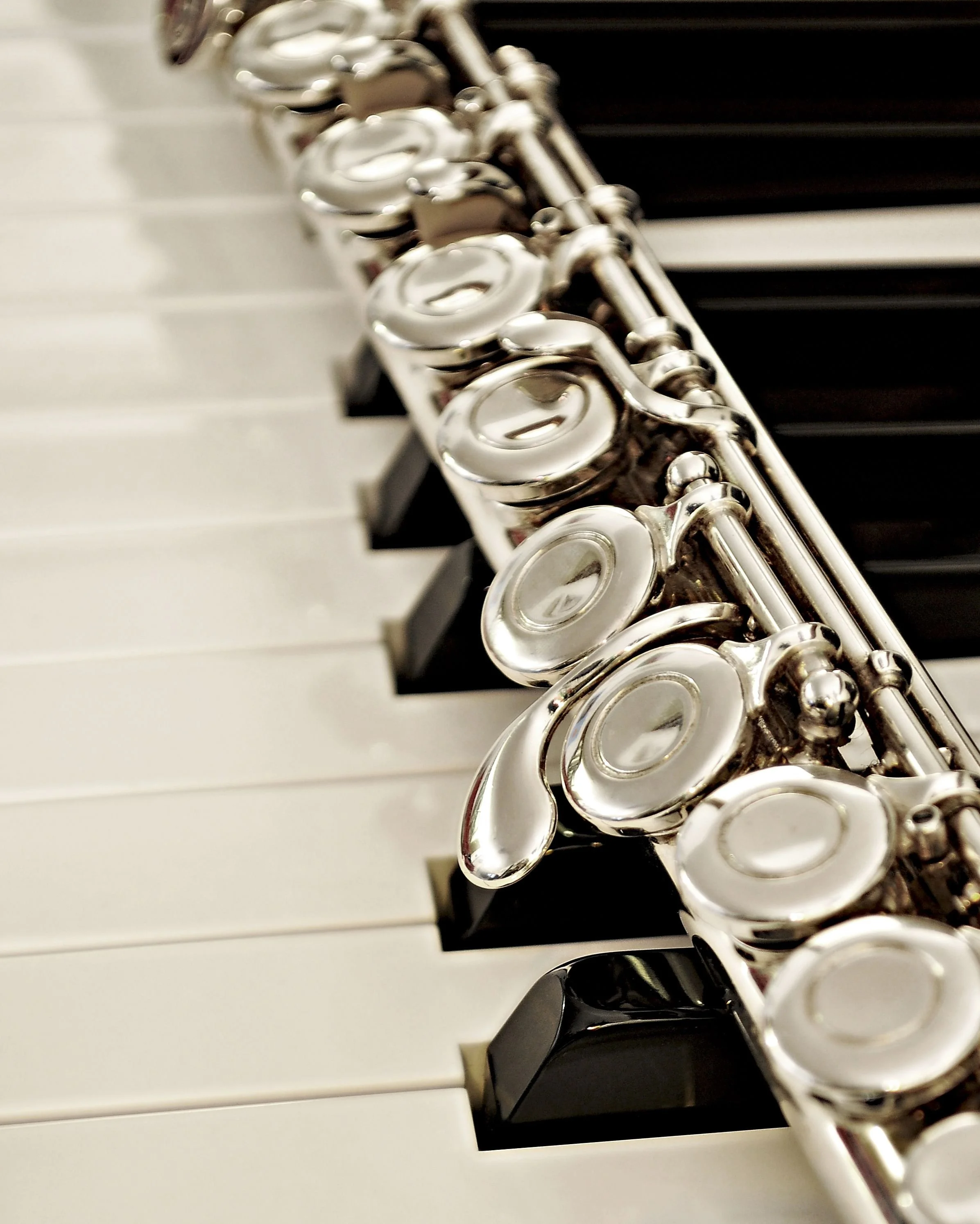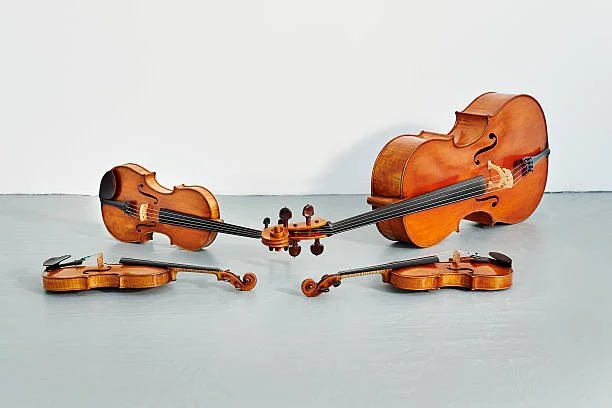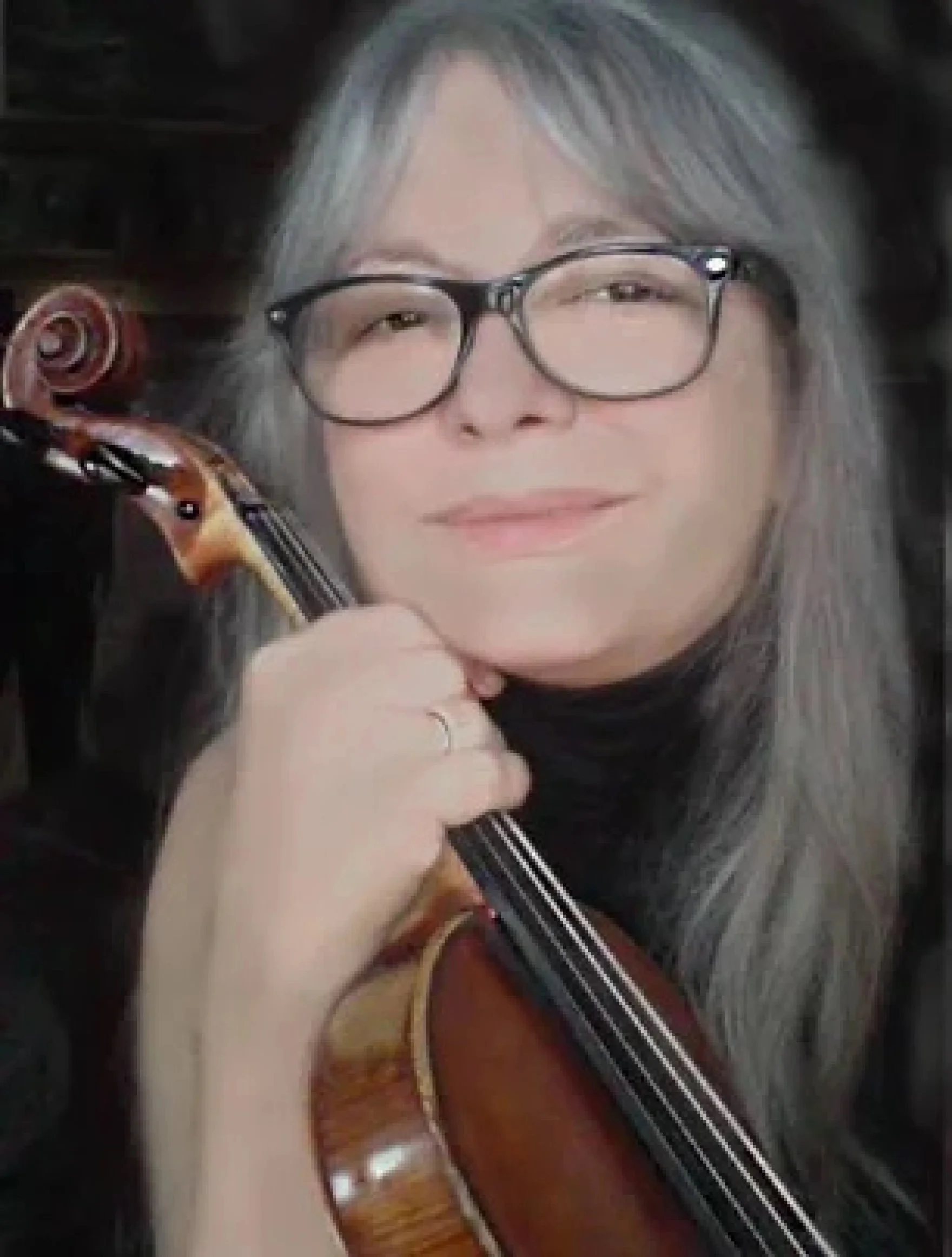Just another brief note here. As you can tell, I’ve been doing some cleanup around here. The page for the quintet had some problems and I’ve fixed them and added a video to boot. The mix is new and should sound more natural. So if you haven’t visit the page (and especially if you have) it’s right here.
Updated recording and video of Spidgin (for flute and piano)
It’s been far too long since I’ve posted, but it’s been a busy time. I’ve recently finished a bit of chamber music and a new symphony. It might take a while to get anything posted about that. So in the meantime, you can hear a new mix of Spidgin and watch it with score on Youtube. Just go right here for more.
Trumpet Concertino -- A fresh revision of an older piece.
I wrote this little concertino back in 1986. It was performed in Boston by Alea III, under th baton of Theodore Antoniou. The soloist was Joseph Foley. The piece comes from a time before computer notation programs, so I only had an ink copy. I had fond memories of it and had long intended to computerize the score and perhaps make a few small corrections here and there. But as I looked at the score, I realized that the orchestration showed my inexperience at the time. The general sense of orchestration was promising, but far from complete. So this new version should be considered as the completion of an older sketch. Instrumentation is the same, except that I moved the mallet parts to a separate player. The earlier version (what I now consider as the sketch) had mallets covered by one of the percussionists. While there is some amusement in observing a player covering so many parts in such a short time, it’s not very considerate. There’s still plenty on everyone’s plate.
There is always a danger of a composer revisiting an older piece. There is a strong temptation to ‘recompose’ the music, moving it into the composer’s mature style and possibly losing the original intent. That’s not what I’ve done: it’s exactly the same piece—just properly orchestrated. The piece is something of a musical mirror. There’s a hint of that in the fact that it ends as it began, with slow, mysterious music. But the harmony and melodies are all reflections around the pitch of G: Harmony below G is an inversion of the harmony above. Some thing goes for the tunes. The result is an uncertain sort of tonality. I’ve not done another piece around this idea, although I possibly should.
At any rate it’s an enjoyable piece from a much younger me.
Recording (and revision) of Three Scenes for Woodwind Quintet
Back in spring of 2023, I completed a woodwind quintet. It was quickly programmed on a chamber music series in Salt Lake City (Intermezzo Chamber Music) and given its premiere on July 31 of 2023. Players were excellent. As with many first performances, it’s rocky in spots, but still worth a listen.
I also realized that there were a few small modifications I needed to make in the first movement and I’ve done that.
If you visit the page for the piece here you can listen to the first performance. You can also see a video of the revision while following the score.
At some point there will be a full video of the first performance as well, although I’m not sure when that will be. I’ll post a link whenever that time comes.
New Video of Acellorimba
In early July, there was a fine performance of one of my older pieces: Acellorimba for cello and marimba. The performers were:
Karen Kaderavek - cello. This piece was written for Karen, along with Nancy Zeltsman. They gave the original performance in 1985
Sebastian Buhts - marimba. Sebastian is a rising star on marimba and I’m delighted he’s part of this performance.
We’re fortunate that there was a nice video capture, along with an audio recording. So you can now enjoy a summer moment in upstate New York. To learn more about the piece, please visit its page.
2023 performance of Acellorimba by Michael Carnes. Performers are Karen Kaderavek and Sebastian Buhts.
Finishing Up the Audio Recording Part of Life
I began recording classical music around 1980 or before. In the beginning it was music of my own: performances that wouldn’t have been captured otherwise. I had a lot to learn! But by10 years later, I was developing some skill. Groups began to ask me to record their concerts. It was always mainly avocational—a way of giving back to the community. I charged for really big projects, but I made it a point not to take on many of those. I used many recordings to improved the reverbs I wrote when I was Exponential Audio.
I’ve had some great advice along the way, and I’ve shared some of what I’ve learned on this website. I’ve recorded lots of superb musicians—some well known around the world. But as I’ve become more involved in composing again I’ve realized there simply isn’t time to do recording any more. Dragging equipment around (getting there early and leaving late) and the many unseen hours and days of cleanup and mastering don’t leave me the time I need for writing or family. So I’m calling it a day.
I still have a number of things to record for the upcoming academic year and I’m going to enjoy them. I’m not accepting any new projects and I’ll be finished with all this activity less than a year from now. It’s been quite a ride, but I have other things to do and other places to be.
Many of you who visit my website have come for these technical articles. There might be one or two more, but each one of those takes as much time as a recording project. If you have originally come for those articles, I hope you’ve stayed for the music. I’m planning on much more of that, and you’re always welcome to drop in.
Spidgin, a short and flashy piece for Flute and Piano
Perhaps you haven’t been introduced to Spidgin. It dates to 2007. I’ve always envisioned Spidgin as a perfect little encore piece. It’s fast, flashy and virtuosic. the flute and piano chase each other around the score, only lining up together on a few occasions over its two minute span.
It also holds an unusual position in my oevre. I was camping down in southern Utah, enjoying astronomy under dark skies with friends. I got a call telling me the piece was being played in Salt Lake City that day. I’d known nothing about it—hadn’t been to rehearsals, gotten a concert notice, nothing. And there simply wasn’t time to dash back up to SLC and take a much-needed shower. I know it was performed, since I saw a review in a local paper a day or two after. But I wasn’t there and no recording was made. I have plenty of other pieces that were performed and un-recorded. But never a premiere. So, for now, I have a nice rendering instead. Please listen to it here.
Then: for those who are no more
This is a sort of memento mori, written in 2021 during the still-growing wave of Covid. My original intention was to write a sort of memorial piece for those who had been taken by this disease. But I expanded it to take note of all the dead everywhere: all who had once lived but are no more. The only thing stranger than death may be life itself. There is a time in life when we experience the world as ourselves. We think what we think, see what we see, and experience a panoply of emotions.
At death, that all ends. But we still live in a more indirect way in the thoughts and memories of those who knew us. But in time they pass, and perhaps we still appear in family histories with an even dimmer glow. And at some point that’s gone as well. But all of us, present and past, are likely to have some recollection of a time we were most alive. We think of that as Then.
This piece has not yet received a performance, but I hope that changes before long. For now, you’re welcome to listen to a high-quality digital rendering
Brass Quintet #3: A blast from the past (in more ways than one)
Back in 1997, I started another brass quintet. I’d already written two of them as well as another piece for brass and small ensemble (which has been withdrawn). All of them were played multiple times around the Northeast.
This piece turned out a little differently. It’s my only work for brass quintet that has not been performed. When I finished it, my regular quintets had disbanded. I didn’t have time to pursue new opportunities, since my technology career had begun eating into my time. I think this is the best of them. It’s flashy and virtuosic. While based on a 12-tone row, it refers strongly to tonality in many places. The five movements are:
1 - Fanfare. Short and simple—maybe deceptively obvious , to be revisited in the last movement
2 - Irregularities. Played in mutes, with clashing meters between groups. Occasionally comedic
3 - Toccato. A wild movement, with much close counterpoint
4 - Canzona. Song-like with alternating theme and chorales.
5 - Reprisals. The fanfare again, this time torn to shreds.
I’ve attempted many renderings of this piece, but never had one that captured a sense of the piece. But the tools keep improving, so I have a new one that finally feels right. Perhaps it will find its way to a stage.
Update on a Duet
Just a few months ago, I announced a new duet, Bagatelles for Clarinet and Viola. I had written the piece for two old friends in Park City, Russell and Leslie Harlow. Only a couple of weeks after I delivered the piece, Leslie learned she had an aggressive lung cancer. She fought as well as she could, but only survived a little way into the new year.
Leslie founded the first chamber music series in Park City and made music there for something like 40 years. Early on, she was joined by her husband Russell (who had founded Nova Chamber Music, his own series in Salt Lake City). I never saw her when she wasn’t cheerful and funny—even when she was doing so much of the work needed to keep a chamber music series going. The last few phone conversations the three of us had were full of laughs and musical insight.
In time, Russell and I will sort out what’s to become of the piece in terms of performance. In any case, it will bear a permanent dedication to both of them. In the mean time, I invite you to listen to an audio rendering of the piece.. It’s sunny and playful (and quite tricky), not unlike Russell and Leslie.







